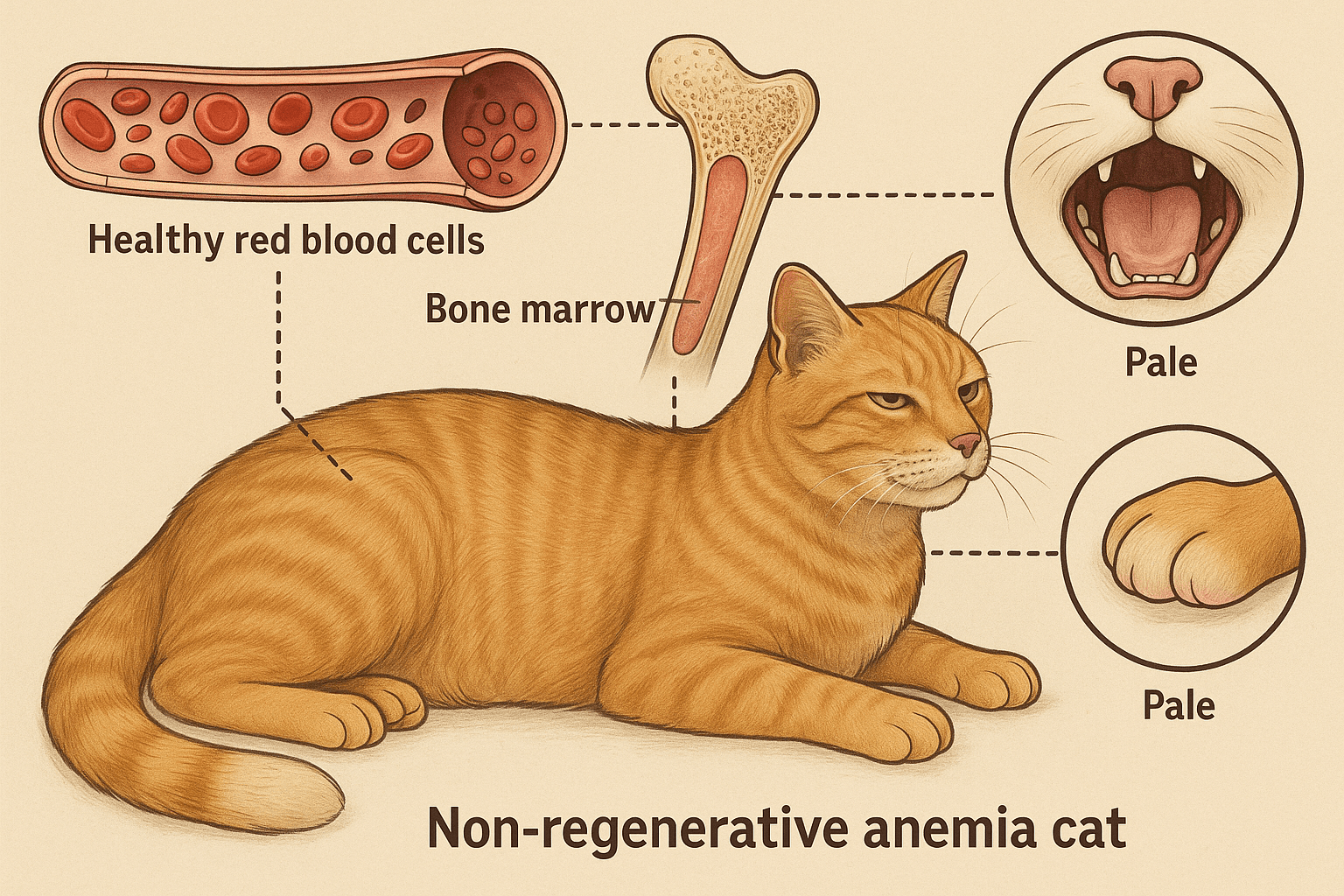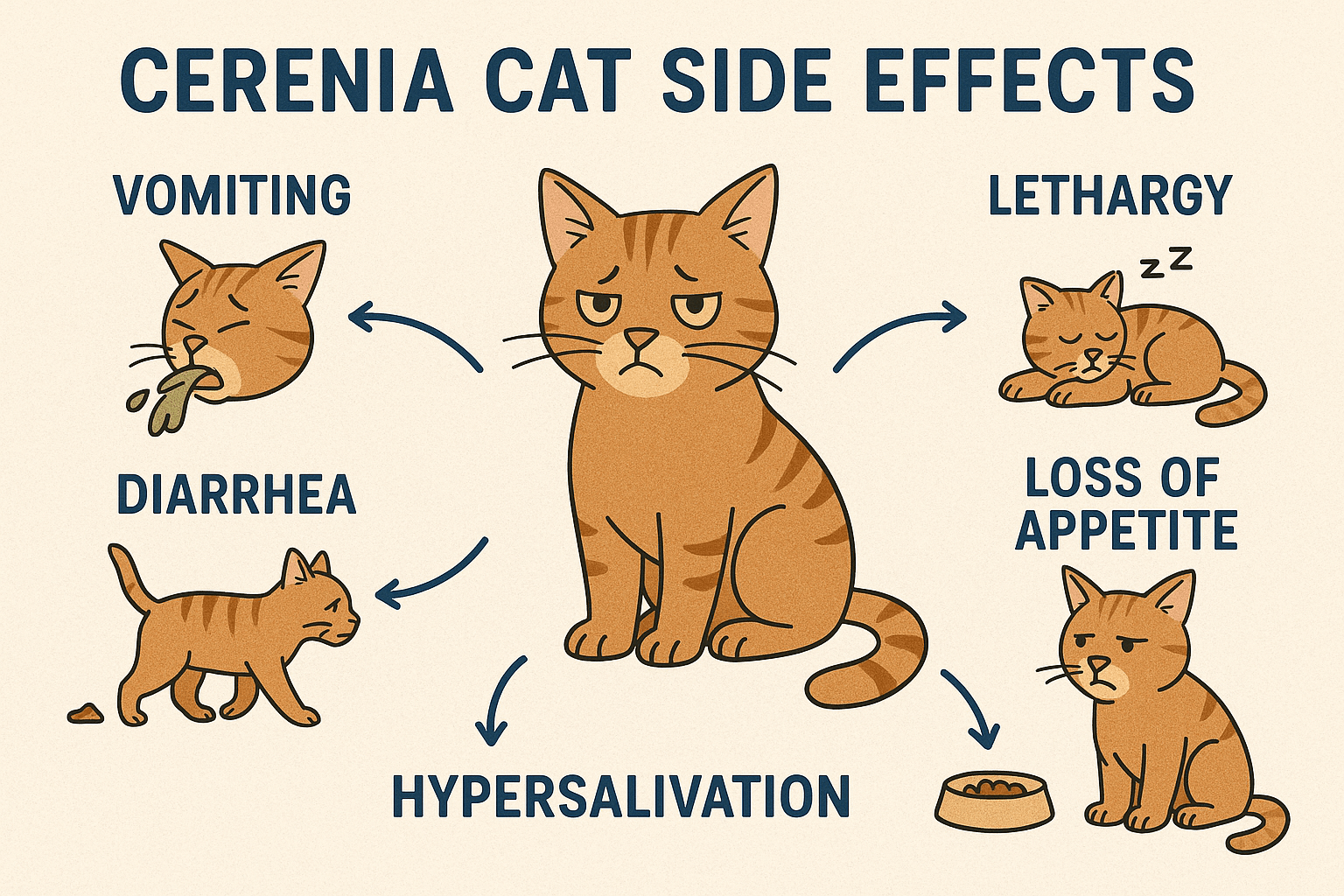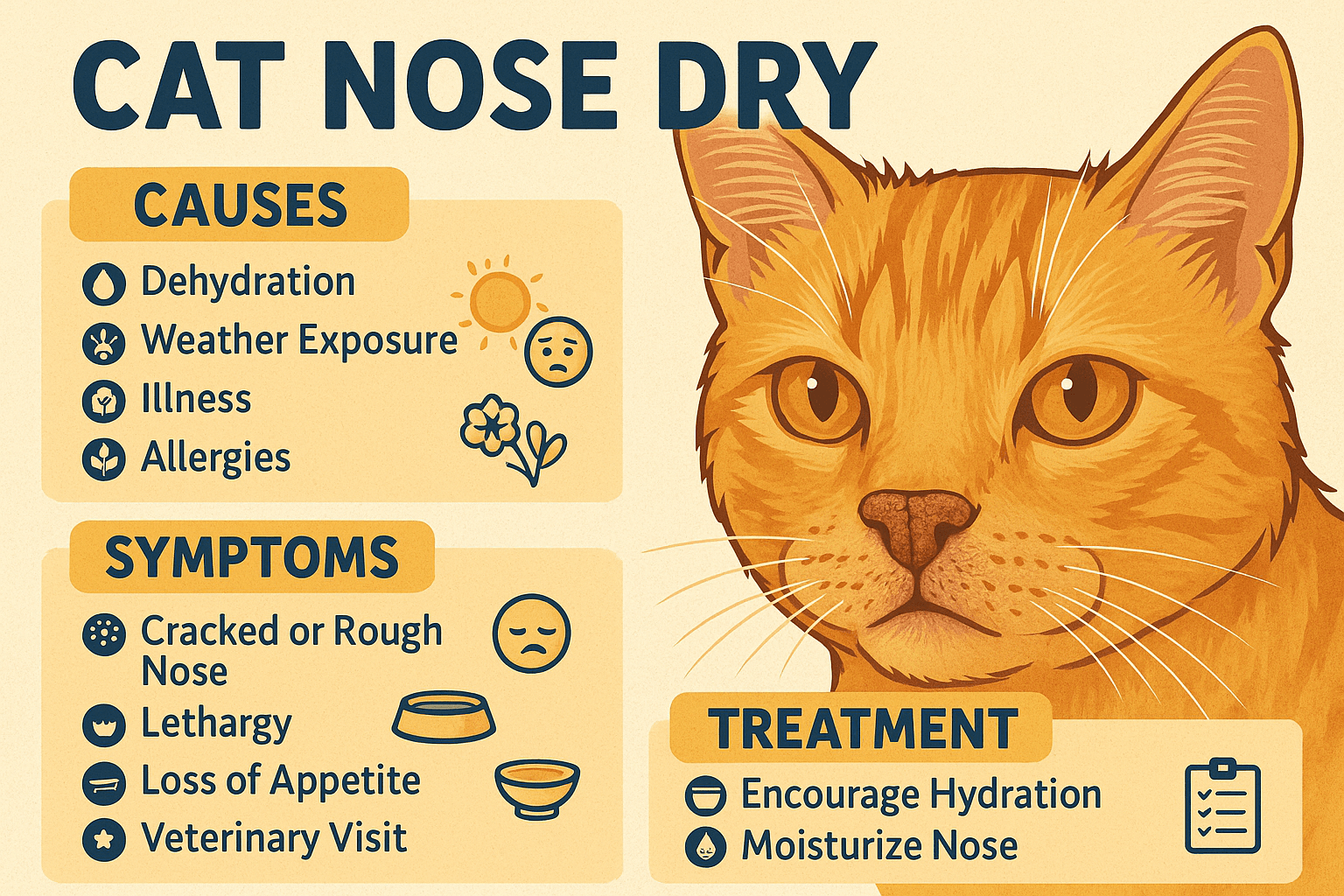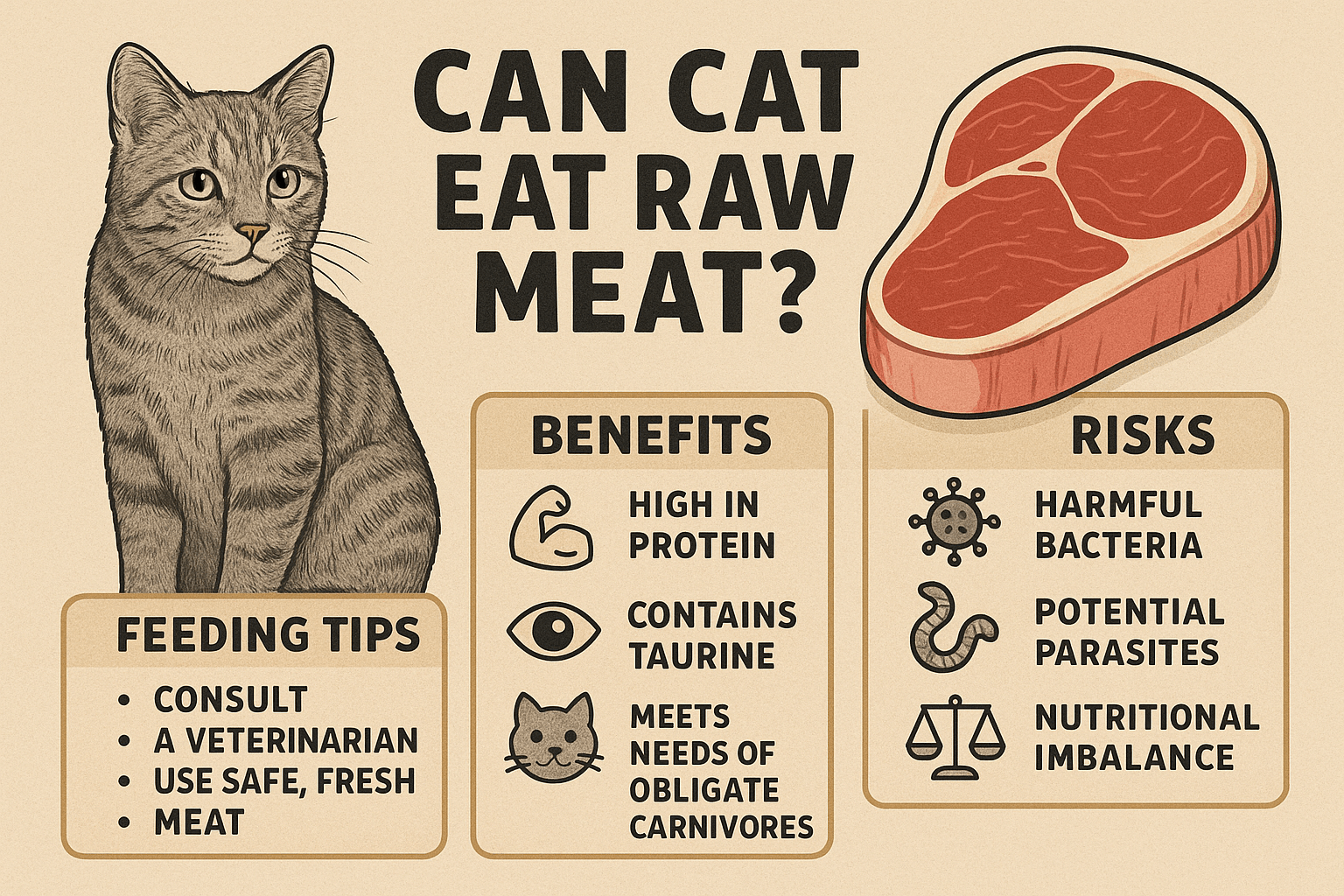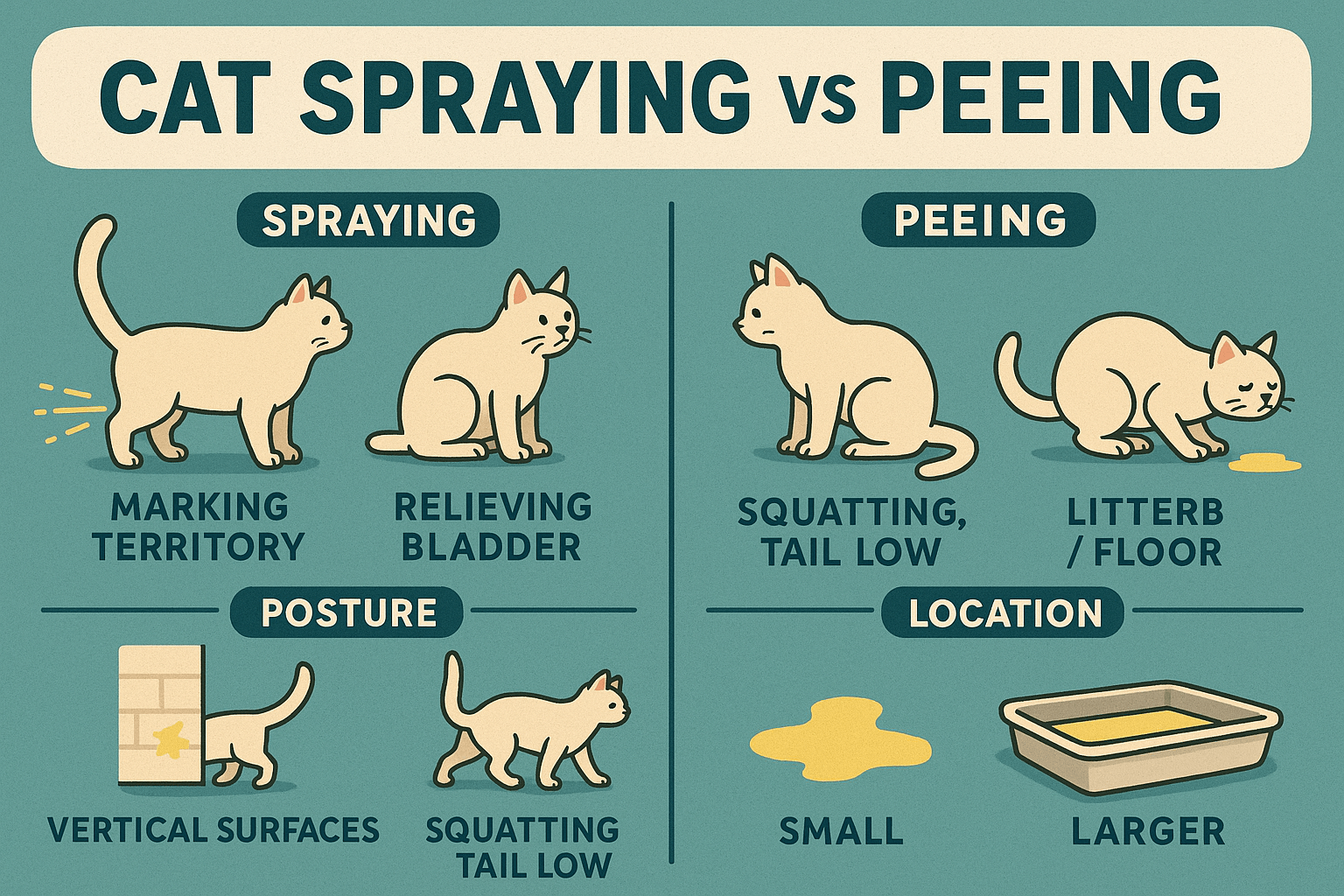Understanding Non-Regenerative Anemia in Cats
Non-regenerative anemia is a condition that affects cats when their bodies fail to produce enough red blood cells to meet their needs. Unlike regenerative anemia, where the bone marrow responds by producing new cells, non-regenerative anemia indicates an underlying issue that prevents proper cell production. This condition can be alarming for pet owners, as it often leads to fatigue, weakness, and other concerning symptoms. Understanding its causes, signs, and treatment options is crucial for ensuring your feline companion receives the care they need. Let’s explore this complex condition and how you can support your cat through diagnosis and management.
Common Causes of Non-Regenerative Anemia in Cats
Non-regenerative anemia in cats can stem from a variety of underlying health issues. Identifying the root cause is essential for effective treatment and management.
Chronic Kidney Disease:
The kidneys play a role in producing erythropoietin, a hormone that stimulates red blood cell production. Chronic kidney disease can disrupt this process, leading to anemia.Bone Marrow Disorders:
Conditions such as leukemia or myelodysplastic syndrome can impair the bone marrow’s ability to generate healthy red blood cells.Nutritional Deficiencies:
A lack of essential nutrients like iron, vitamin B12, or folate can hinder red blood cell production, resulting in anemia.Infectious Diseases:
Viral infections such as feline immunodeficiency virus (FIV) or feline leukemia virus (FeLV) can suppress the immune system and affect blood cell production.Toxic Exposure:
Certain toxins, including lead or certain medications, can damage the bone marrow and reduce red blood cell production.
Recognizing these potential causes allows veterinarians to tailor diagnostic tests and treatments to address the specific issue affecting your cat.
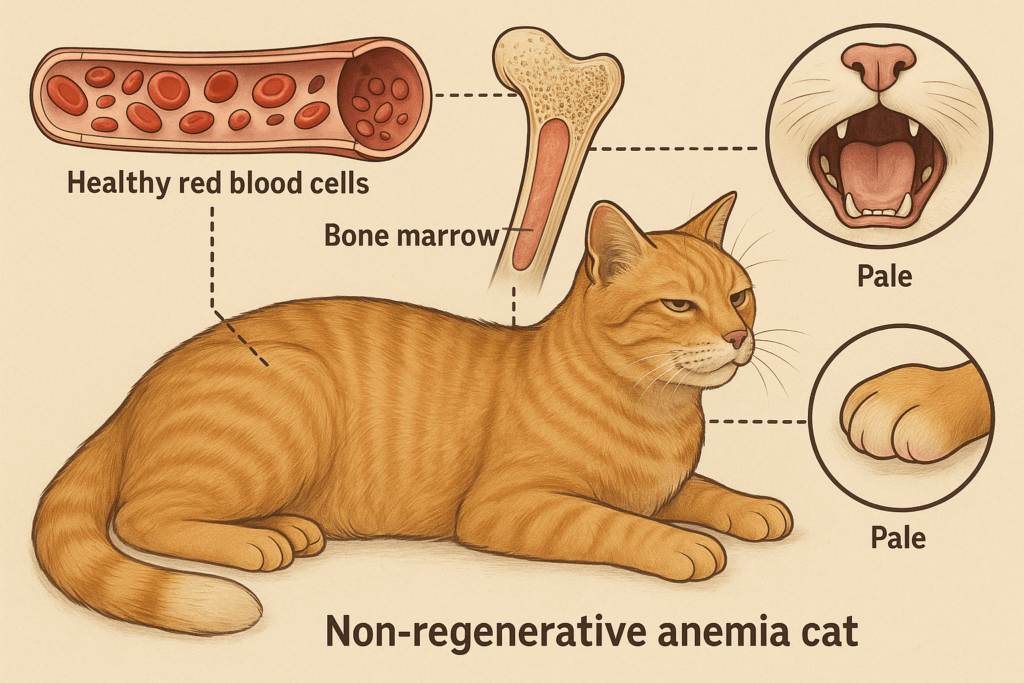
Signs and Symptoms to Watch For
Detecting non-regenerative anemia early can make a significant difference in your cat’s prognosis. Look out for these common signs that may indicate your cat is struggling with this condition.
Lethargy and Weakness:
Cats with anemia often appear unusually tired or reluctant to engage in physical activity.Pale Gums and Mucous Membranes:
A pale or whitish appearance of the gums is one of the most visible indicators of anemia.Loss of Appetite:
Anemic cats may lose interest in food, leading to weight loss and further nutritional deficiencies.Increased Heart Rate:
The heart may compensate for low oxygen levels by beating faster, which can be detected during a veterinary exam.Difficulty Breathing:
Labored breathing or panting can occur as the body struggles to deliver sufficient oxygen to tissues.
If you notice any of these symptoms, consult your veterinarian promptly to determine the underlying cause and begin appropriate treatment.
Check this guide 👉Understanding Cat Blood Sugar Levels: Best 7 Expert Tips!
Check this guide 👉Understanding Cat Blood Types: Best 7 Health Tips!
Check this guide 👉Understanding Cat Bloodwork Costs: Best 7 Health Tips!
Causes of Non-Regenerative Anemia | Potential Treatment Options |
|---|---|
Chronic kidney disease | Erythropoietin therapy, dietary changes |
Bone marrow disorders | Chemotherapy, supportive care |
Nutritional deficiencies | Supplementation with iron, B12, or folate |
Infectious diseases (e.g., FIV, FeLV) | Antiviral medications, immune support |
Toxic exposure | Detoxification, removal of toxin source |
Diagnostic Process for Non-Regenerative Anemia
Diagnosing non-regenerative anemia requires a thorough evaluation by a veterinarian. Understanding the steps involved can help you prepare for your cat’s appointment and ensure accurate results.
Physical Examination:
Your vet will assess your cat’s overall condition, checking for signs like pale gums, dehydration, or weight loss.Complete Blood Count (CBC):
A CBC measures red blood cell count, hemoglobin levels, and other key indicators to confirm the presence of anemia.Blood Smear Analysis:
Examining a blood smear under a microscope helps identify abnormalities in red blood cell size, shape, and structure.Bone Marrow Biopsy:
In some cases, a biopsy may be necessary to evaluate the bone marrow’s function and rule out disorders like leukemia.Additional Tests:
Urinalysis, imaging, or infectious disease screenings may be performed to pinpoint underlying causes such as kidney disease or infections.
A comprehensive diagnostic approach ensures that all contributing factors are identified, paving the way for targeted treatment.
Managing Non-Regenerative Anemia at Home
While veterinary care is essential, there are steps you can take at home to support your cat’s recovery and improve their quality of life.
Provide a Balanced Diet:
Ensure your cat’s diet includes high-quality protein, vitamins, and minerals to support overall health and red blood cell production.Monitor Hydration Levels:
Encourage your cat to drink water regularly, as dehydration can exacerbate symptoms of anemia.Limit Stressful Situations:
Create a calm environment to help your cat conserve energy and focus on healing.Administer Medications as Directed:
Follow your veterinarian’s instructions carefully when giving supplements or medications to avoid complications.Schedule Regular Check-Ups:
Frequent follow-ups allow your vet to monitor progress and adjust treatment plans as needed.
By combining professional care with attentive home management, you can give your cat the best chance at recovery.
Complications of Untreated Non-Regenerative Anemia
If left untreated, non-regenerative anemia can lead to serious complications that significantly impact your cat’s health and well-being. Understanding these risks underscores the importance of timely intervention.
Organ Damage:
Prolonged oxygen deprivation can harm vital organs like the heart, liver, and kidneys.Severe Fatigue:
Cats may become too weak to perform basic activities, such as eating or grooming.Increased Susceptibility to Infections:
Anemia weakens the immune system, making cats more vulnerable to illnesses.Cardiovascular Strain:
The heart works harder to compensate for low oxygen levels, potentially leading to heart failure.Reduced Quality of Life:
Chronic discomfort and inability to engage in normal behaviors diminish your cat’s happiness.
Addressing non-regenerative anemia promptly minimizes these risks and improves your cat’s prognosis.
Tips for Preventing Nutritional Deficiencies
Preventing nutritional deficiencies is a proactive step in reducing the risk of non-regenerative anemia. These tips can help ensure your cat receives the nutrients they need.
Choose High-Quality Cat Food:
Opt for foods specifically formulated to meet feline nutritional requirements.Include Taurine-Rich Ingredients:
Taurine is critical for red blood cell health and is found in meat-based diets.Supplement Wisely:
Consult your vet before adding supplements to avoid over-supplementation or imbalances.Rotate Protein Sources:
Offering a variety of proteins ensures a broader range of nutrients.Avoid Toxic Foods:
Keep harmful human foods like onions and garlic away from your cat’s diet.
By prioritizing nutrition, you can help safeguard your cat against preventable forms of anemia.
Emotional Support for Cats During Recovery
Cats undergoing treatment for non-regenerative anemia may experience emotional challenges alongside physical ones. Providing emotional support can aid in their recovery process.
Maintain Routine:
Keeping a consistent daily schedule reduces stress and provides a sense of security.Offer Comfort Items:
Familiar bedding, toys, or scents can comfort your cat during times of illness.Engage in Gentle Play:
Light play sessions keep your cat mentally stimulated without overexertion.Spend Quality Time Together:
Simply being present and offering affection reassures your cat that they are loved.Use Calming Products:
Products like pheromone diffusers can create a soothing environment for anxious cats.
Emotional well-being is just as important as physical health in helping your cat recover fully.
Frequently Asked Questions About Non-Regenerative Anemia in Cats
What is the difference between regenerative and non-regenerative anemia?
Regenerative anemia involves the bone marrow producing new red blood cells, while non-regenerative anemia indicates insufficient production.
Can non-regenerative anemia be cured?
The prognosis depends on the underlying cause, but many cases can be managed effectively with proper treatment.
How long does treatment take?
Treatment duration varies based on the severity of the condition and the response to therapy, ranging from weeks to months.
Is non-regenerative anemia painful for cats?
While not directly painful, symptoms like weakness and difficulty breathing can cause discomfort and stress.
Can diet alone treat this condition?
Diet plays a supportive role, but addressing the underlying cause is essential for effective management.
Supporting Your Cat Through Non-Regenerative Anemia
Non-regenerative anemia is a complex and challenging condition, but with early detection and proper care, many cats can live comfortably despite the diagnosis. By understanding the causes, recognizing symptoms, and working closely with your veterinarian, you can provide your feline friend with the support they need to thrive. Remember, attentive care and compassion go a long way in helping your cat navigate this journey. With patience and perseverance, you can ensure your beloved companion enjoys a happy and fulfilling life.
Cerenia Cat Side Effects: Best 7 Expert Tips! Discover expert advice on managing Cerenia side effects, ensuring your cat’s safety, and promoting a smooth recovery with practical tips.
Why Is My Cats Nose Dry? Best 7 Expert Tips! Discover expert advice on causes of dry cat noses, signs of concern, and how to keep your feline healthy and comfortable.
Can Cats Eat Raw Meat? Best 7 Expert Tips! Discover the benefits, risks, and expert advice on feeding raw meat to cats safely and nutritiously.
Cat Spraying vs. Peeing: Best 7 Expert Tips! Learn to identify the differences, understand causes, and stop unwanted behaviors with proven strategies for a cleaner, stress-free home.

